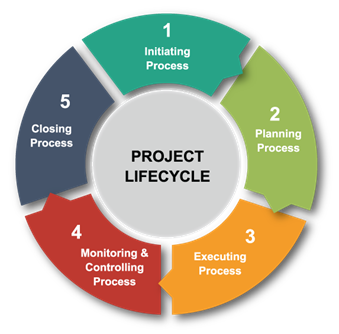 The key to LIMS configuration co-design is that it puts you – the user – at the center of the design process. When you’re actively involved in designing and developing your LIMS configuration, you’re rewarded with a system you already know in-depth, as well as being best positioned to operate and maintain it long-term, and decide how to improve it in the future.
The key to LIMS configuration co-design is that it puts you – the user – at the center of the design process. When you’re actively involved in designing and developing your LIMS configuration, you’re rewarded with a system you already know in-depth, as well as being best positioned to operate and maintain it long-term, and decide how to improve it in the future.
At LabVantage, we can independently design and develop a LIMS configuration based on a company’s business processes alone. But did you know that we can also have our subject matter experts (SMEs) join forces with yours? Working together, we co-design your LIMS configuration and even co-develop the system, including all the configuration necessary to get you up and running.
Co-Designing Your LIMS Configuration
To co-design your configuration with us, you’ll need to have SMEs who understand LIMS systems, are specialized in software and system design, and have at least a working knowledge of the basic JEE technology and web application framework we use.
To tackle system interfaces with us, you might also need specialists in the technology of the systems being connected and the protocols used to implement the interface, such as RESTful web services, HL7, and others.
The result of our collaboration is a design specification document. Once the final version is approved by both you and LabVantage, our developers can use it to configure your system – or to write new software when creating new system interfaces.
Taking Co-Design Further—What You Need to Co-Develop with Us
If the co-design collaboration leaves you wanting more, we’ve reserved a space for you at the developers’ table as well!
In addition to co-design, you can also work side-by-side with us to configure your system and write any needed interfaces. LIMS co-development brings your software configuration specialists and developers together with ours. Ideally, you have developers who are already very familiar with configuring LabVantage software and writing java code that interacts with the LabVantage APIs. If this is not the case, your developers should be able to quickly learn these skills.
LIMS Co-Development: Higher Stakes, and Greater Reward
At this level, the stakes are higher but so is the reward. While co-development can be the trickiest project structure to manage, it ultimately allows your operational staff to truly know the ins and outs of your laboratory informatics management system. It also ensures they are well-versed in how to maintain and even upgrade the operational LIMS.
 Setting the Framework for a Fruitful Partnership
Setting the Framework for a Fruitful Partnership
At the first project meeting, it is key to establish the authority under which the team will operate. Kicking off the meeting with a word from your CIO or vice president about how valuable the LIMS is to the company reminds both teams of how crucial their work will be.
Who to Include on the LIMS Design Team
Who should be included on the LIMS co-design or co-development team? Some members will be facilitators, business stakeholders, others will be technical SMEs or specialists, and still others may be end-users.
Among the core team members, it is important to communicate which individuals are the business stakeholders, who are the technical SMEs – and who will lead the sessions by keeping them on time and on topic. Also one team member should be identified as a ‘Team Secretary’ who will document and report back all action items.
A key role not to be overlooked is that of a listening facilitator. The Certified Manager of Quality/Organizational Excellence Handbook (4th edition – page 210) points out that “hearing and listening are distinctly different. People hear with their ears. They listen through their head, eyes, heart, and gut.”
To get the most out of your sessions, designate a facilitator whose job is not to lead the discussion, but rather to listen effectively. The facilitator will encourage equal member contribution, ensure consensus, legitimize perceptions and feelings, maintain or regain discussion focus, and provide simply-worded summaries of lengthy or complex topics in the form of, “So what I’m hearing is…”
Project Management is Key to Successful LIMS Design & Implementation
Success demands strong project management skills. Project managers on both sides must conduct strong risk assessment with preventative action planning, and commit to analyzing any issues raised and taking corrective action as needed throughout the life of the project.
How to Communicate, and When to Stop
Project managers should structure and inform team members how communications will be collected, stored, analyzed, and rationalized. One important tip for meetings is to designate an area of the whiteboard for a parking lot – a catchall space for thoughts, concerns, or deliverables – whether for phase 1 or 2.
The project managers will need to clarify with the team whether individual laptops and cell phones are allowed during the session. While taking notes and referring to technical specifications on a laptop can add value, answering emails or surfing the web is definitely a distraction!
Develop in Multiple Settings for Best Results
After all the work invested in the co-design or development project, the actual LIMS development environment is a critical factor which can become a stumbling block. Too often, well-meaning teams plan to co-develop on multiple installed systems and expect the resulting configuration to magically work once combined. However, LabVantage has seen that development on disparate systems only results in duplicated effort, lengthy reintegration of disconnected deliverables, and potentially conflicting functions.
Instead, we recommend using multiple environments:
- Development: Individual developers can use software on their local computer to write code and test out risky functions.
- Integration: After drafting work on a local system, individual developers should transfer their work to the integration system for further refinement.
- Validation/Testing: When a software iteration is complete, transferring the LIMS to a validation/testing system gives testers a clean place to work, and forces developers to consider the mechanisms of configuration and code packaging & transfer early in the implementation life cycle. When the final software iteration is delivered, this is typically the system where the Operational Qualification (OQ) is executed.
- Production: As the final installation of the system, this is where System Acceptance Testing (SAT) or User Acceptance Testing (UAT) will be executed.
When choosing an integration environment, consider either placing it within your network (into which LabVantage personnel can VPN), or allow us to host a secured integration in a cloud environment.
While co-design and co-development require much effort and expertise from both you and us at LabVantage, these tools deliver the most rewarding customer interaction, and equip you with the most qualified, adept LIMS team possible.
To find out more about co-designing or co-developing your LIMS configuration with us, contact us today.



